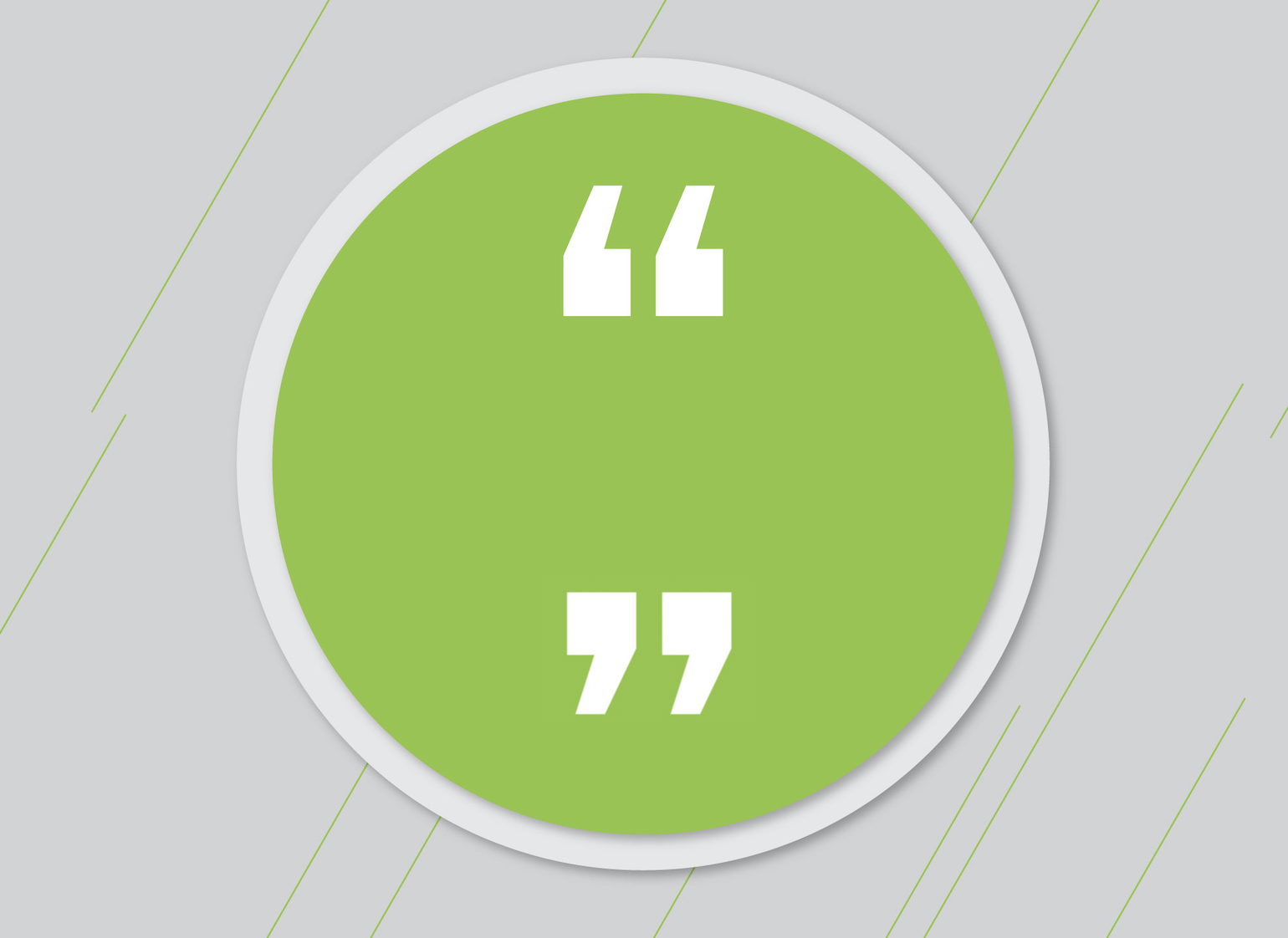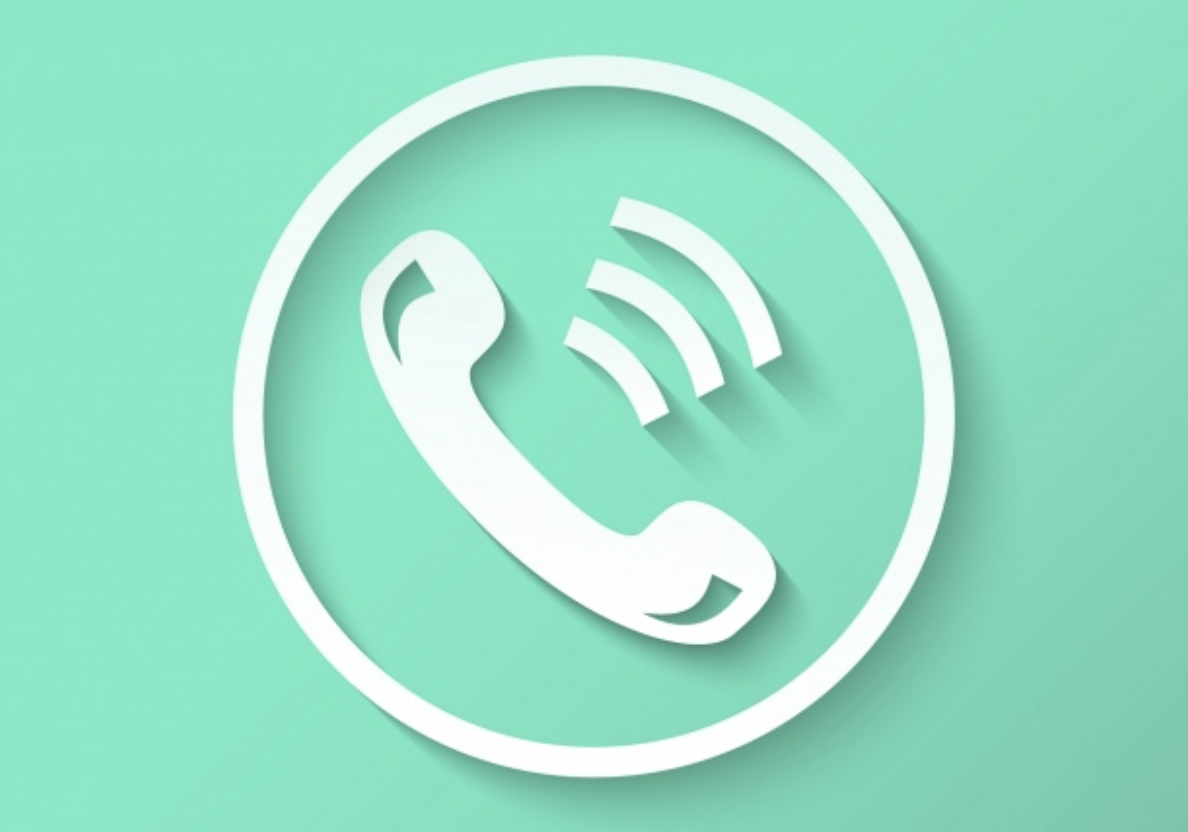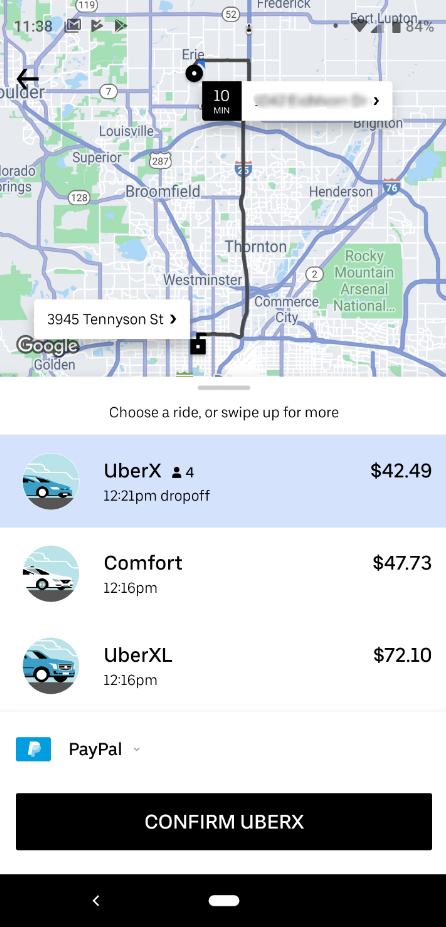If you're shopping for a new vacuum, it's easy to compare features to find one that meets your dust-busting needs. But what if you want a cleaning service to come to your house and do the job for you? You reach out to six providers, and they all tell you they can do it—and how.
How do you know which one will provide the best service?
This question gets to the heart of how anyone selling services has to compete to win business. Whether you sell to other companies or to consumers, selling services means selling yourself, your team's expertise, and the value your company brings to the client or customer. It's a tricky prospect, but there are ways to make it work.
Differentiating Your Business
According to the US Small Business Administration, only about 50% of businesses survive five years or longer. One of the primary reasons: they get outcompeted. To make it past that five-year mark, you need to know your competition and differentiate your business from them—especially when selling an intangible.
Perform a competitive analysis
To better understand where you fit into your market, research your competition. It doesn't have to be anything fancy to start: set up a spreadsheet that includes your company, your competitors, and the areas you want to compare.
- General capabilities
- Target market
- How they market and sell
- Strengths, weaknesses, opportunities, threats (SWOT)
You can also gather info on your competitors by connecting with them. Join industry associations, attend events, and find ways to socialize. You'll learn a lot from each other and can develop valuable professional relationships in your field that may even open doors for future referral business.
Finally, check out your competitors' Glassdoor reviews—you can learn a lot from employee comments. For example, a potential client once asked me for my thoughts on a larger competitor he was also talking with. Rather than saying anything negative, I pointed him to the company's Glassdoor page where dozens of employees shared their stories. The majority of reviewers—primarily writers—expressed feelings of being rushed to complete work with little research, resulting in poor quality, angry/lost customers, and a general feeling of burnout.
By contrast, our agency's content creation process was strategic. Writers were paired with subjects they were already familiar with, given time to interview experts, and focused on quality rather than quantity.
Because this competitor was a popular player, a lot of buyers I encountered were usually talking with them. Being able to show how we approached our services and then directing them to the competitor's Glassdoor page during the sales process paid off. Buyers usually don't want to work with companies that treat their employees poorly. For most, the message was clear: unhappy employees equal unhappy customers.
Develop a niche
One of the top reasons startups fail is because they "get outcompeted." Being known for a specialty in a service field immediately sets you apart from the competition. Not only can you market and attract prospects with a niche, but you can also better position your business during the sales process.

When I was selling marketing services, at least half of my sales prospects asked me what made our agency different than the others. It was a question I loved because I could tell a story about our specialized team and how we approached our services differently from onboarding to delivery and everything in between.
For example, all of our writers worked in-house and had at least five years of experience writing for the technical and professional service industries we targeted. In addition, they became experts on our clients' specific businesses by conducting interviews and meeting regularly to discuss relevant topics and trends. This set us apart from our competitors because they worked primarily with freelance writers who didn't get the deep exposure to a client our writers did.
Know your buyers
Buyer personas—profiles of your ideal buyers—are particularly important in service selling because they provide insights into the demographics, priorities, concerns, and decision factors common to your potential customers.
Because you are selling value—not a product they can touch or immediately experience—you need to know what your potential buyers find most important when seeking the types of services you provide. These are the outcomes produced by your services and can take different forms.
For example, what goals do your web design services help a small business owner achieve? Does it make their small online shop look like its bigger competitors? Does it increase visitors and sales? Knowing buyers' common goals helps you ask the right questions during the sales process to find what's important—and what's not.
Sometimes value is less tangible. What feelings do your interior design services evoke in a middle-aged couple? Is that new mid-century living room intended to impress their in-laws? Or is it something more practical like having fewer soft surfaces to clean? Either way, knowing the types of things (or feelings) your buyers value will help you focus your sales.
Always be helping
Sales doesn't have the best reputation. In fact, only 18% of salespeople are seen as "trusted advisors" by customers. Even more alarming, HubSpot found that salespeople are only slightly more trustworthy than politicians. Oof.
So how does a salesperson gain trust when the deck is stacked against them, particularly when selling an intangible?
By putting the needs of the buyer first with an "always be helping" philosophy.
This is a 180-degree shift from the traditional mindset of closing anyone and everyone no matter if it's a good fit or not. Always be helping pairs well with selling services because the salesperson becomes the trusted advisor that so many customers otherwise find lacking. Here are some ways you can always be helping:
- Determine how (and if) you can help the buyer
- Uncover the problems, pain points, or challenges you can solve for them
- Set clear expectations
- Provide value in all of your emails and calls
- Do what you say you are going to do every time
- Be transparent in every interaction; don't hide anything
- Share your expertise during the sales process
My wife and I recently had our house painted, and we chose one company above the others because the owner was the poster guy for "always be helping." When we met, he asked a few questions about our needs, experience with painters, and so on. Then he walked us around the house, pointing out details the other companies missed—and we didn't know to mention. Things like "we'll put an extra coat on this wall because it gets the most sun," or "this gutter is corroding, so we'll treat it before we paint."
The best part: he was writing it down as we walked. These details were reflected in his proposal, which also gave us confidence that he was meticulous and could be the trusted advisor we were looking for.
Developing and Using Social Proof
In his bestselling book on influence, Robert Cialdini explains that people—in order to determine what is correct—look to what other people think is correct. He coined this "social proof." We see evidence of social proof all around us—from positive online restaurant reviews to a long line of people waiting to get into a nightclub.
Social proof for service businesses takes on a number of forms: online reviews, testimonials, case studies, and references. And this proof is vitally important for service providers because there is no product to "try" or "test" beforehand. All you have are the results and impressions from your customers.
Case studies
People love stories. In fact, we physically crave stories like we crave coffee, chocolate, or shopping. Research by the Center for Neuroeconomics Studies found that stories cause a release of oxytocin in listeners, which in turn makes them "more trustworthy, generous, charitable, and compassionate."
A case study is simply the story of a company's success with a client. Good case studies—like any good story—help marketers promote services. They're also valuable ways to earn trust and demonstrate social proof during the sales process. Absent a product demo, service companies need stories to show how their expertise created value for a client.

Once you have a few case studies created, learn to tell those stories during the sales process. For example, during a discovery call, a well-timed story—one that relates a similar client with similar challenges—shows that you can solve their problems and gains their trust at the same time.
References
Buyers want to put their hands on your services, and the closest thing to that is talking with someone who has worked with you: a reference.
Make sure you have at least one client you can use as a reference. Ask them if they would be interested—and if so, use them sparingly. They should only be brought in as the last step of the sales process, similar to an employer calling your references at the end of the hiring process. Be sure to reward your reference after they've spoken to your buyer. An Amazon gift card or Harry & David gift basket can go a long way as a thank you. Be sure to match the level of gift to the size of the sale: a $500 sale won't warrant a $50 gift card—or you'll run yourself out of business.
I once worked with a prospect who wanted to speak with a reference before I even presented a proposal. Here was my reply: "I'm happy to connect you with references, but I value their time, so we'd like to do this only as a final step after we've agreed on the service deliverables and pricing. Does that make sense?"
The buyer was fine with this explanation. If they weren't, that would have been a red flag anyway.
If you're at the end of the process, and references have been requested, ask the buyer what they most want to learn so you can match them with the right person. Then email your reference and ask them again if they would be interested, introduce them both over email, and allow them to connect.
Understanding Your Customer Through Discovery
The discovery call or meeting helps you determine if you're a good fit for the client, and vice versa. Through a series of questions, you'll uncover info about the customer's current situation, including their challenges, goals, budget, and timeframe.
The buyer's answers will help you determine if you can help them, how you can help them, and if you want to help them (i.e., do they seem like someone you'd like working with?). In general, discovery for B2C services is less involved than it is for B2B because they usually involve a lower cost and far less complex solution. However, because few B2C service providers ask good questions, doing so will make you stand out right away.
Formulate your questions
The questions you ask—and the answers you receive—will help determine if you're a good fit for each other. In other words, do they have a problem that can be solved by your services? Do they have the right budget? Is this a pressing concern? Who are the decision-makers?
Spend the bulk of your time focusing on the buyer's challenges and goals. A study by Gong.io of 519,000 recorded discovery calls found that the most successful salespeople "uncovered between three and four business problems." And the same study said the ideal number of questions should be between 11 and 14.
Here's a list of questions to consider for B2B:
- Tell me about your company
- What is your day-to-day role in the company?
- What are your goals? Overall business goals?
- What metrics are you responsible for?
- What problems are you trying to solve?
- What do you think caused these problems?
- Why are you addressing these problems now?
- What will happen if you don't address these problems now?
- What is your timeline for getting started?
- Is there a budget allocated for this issue?
- Who else is involved in the decision-making process?
And here are questions to consider for B2C, which you can tailor to your type of services:
- What prompted you to reach out to us?
- What issues/goals/challenges are you trying to solve?
- Have you ever used a service like this before? If yes, when and what was your experience like?
- What do you like to see from your service providers? What's important?
- Are you considering anyone else for this service/project?
- What budget range did you have in mind for this?
- What is your timeline for getting started?
- Is there anything that could delay this?
- Is there anything else I should know that we didn't cover?
Don't forget that you're trying to get to the heart of their problems. That means digging below the surface answers until you get the gold you're looking for. Below is an example scenario for an agency selling its marketing services:
Q: What is the most pressing challenge for you?
A: We need to produce more qualified leads from our website.
Q: How important are these leads to your overall revenue goal of $10M?
A: They are supposed to represent 50% of our total sales and were until last year, but are currently only 35%.
Q: What do you think caused this drop?
You've uncovered the most important challenge and why (with data) it's so important. Now you can move on to the causes and dig deeper in areas like what makes a qualified lead, how they're attracting leads, and so on.
Complete your pre-discovery prep
If you're selling services to a consumer, your discovery prep may be as simple as setting up a call or time to meet in-person. Prepping for a B2B buyer will be more involved. For that, email your buyer an agenda for the general areas you'd like to cover. These will include company info, market, their role in the company, and problems they are trying to solve. If you need specific data about their business, let them know in the agenda so they have it for the call.
Then spend 30 minutes or so learning more about the buyer and the company using their website, social media, and a Google search. At a high level, understand what they sell and who their customers are. Start with the "About Us" page, then products/services, and then review any case studies or customer pages.
The more you know, the more prepared you'll be to ask relevant, intelligent questions.
Run a discovery call
The first minute of the call sets the stage for the time you spend together. Here are four quick areas to cover in the opening minute (B2Cs are more likely to meet in person, but these same steps still apply for most businesses):
- Call purpose: "To understand if and how we can help with your challenge."
- Call length: "We have 1 hour scheduled. Does that still work for you?"
- Agenda: Restate (from your email) the areas you want to cover. "Does this sound good?"
- Buyer's goals: "What do you hope to get out of today's call?"
Before you start your questions, ask if it would be okay to record the call (B2Cs likely don't need to). This will ensure accuracy and allow you to listen better rather than trying to write down every word they say.

One thing you want to avoid is making the discovery call an interrogation where you just rattle off questions from a prepared list. It's a conversation. The more you both talk equally, the better.
Be curious and remember to always be helping. When an HVAC tech was at my house recently diagnosing why my AC wasn't cooling, he offered a helpful tip to get better air circulation: removing the floor vent air filters the previous owner had installed throughout the house. It was a small thing but immediately sent my trust level up a notch.
Presenting and Closing
Because the buyer hasn't been able to try, touch, or demo your service, how you've presented yourself and the value you can bring relative to the competition is crucial. If you've effectively uncovered a buyer's challenges and proved your expertise and ability to solve the challenge, you've positioned yourself well to earn a customer.
These include all of the things—differentiation, always be helping philosophy, social proof, great discovery questions—required to win service business. Now it's time to put what you learned into a presentation that wins the sale.
Create a powerful proposal
A lot of companies lead their proposals with who they are, their accomplishments, and a list of their multiple offices. Don't do this—not yet, anyway. The buyer doesn't care. They only care about themselves and how you can help them.
To start, and this is key, use the information gathered from discovery to address the buyer's challenges and goals. Then move on to your solution showing how it will solve their problems and help them achieve their goals. Use data if possible to support this. Include a case study or testimonial page followed by your pricing.
The pricing page should include good, better, and best options. That's called versioning and has been practiced by companies selling products and services for years. The three choices give the buyer a feeling of control and allow you to provide different levels of service value based on the buyer's needs. This pricing method is employed by a company app likely sitting on your phone right now—Uber.

Finally, add a timeframe (if needed) and a company page. Here's an outline to follow for an entire proposal.
- Executive summary with challenges/goals/solution and value overview
- Your services
- Case study/testimonials from similar customers
- Three service pricing options with a recommended option
- Timeframe if applicable
- Info about your company, awards, etc.
As you present your proposal, periodically ask, "Does that make sense?" or "Do you have any questions about XYZ?" Pause and give them time to respond. If they have questions or concerns, this is the time to address those.
Up until this point, you've shown that your team is best prepared to solve the buyer's challenges and help them reach their goals. You've asked pertinent questions. And your proposed services show how they solve those challenges within a competitive budget. If you've done all of these things, you've positioned your company for a better chance to close.
At the end of your proposal review meeting, ask:
"Is there anything we didn't address that was important to you?"
If the answer is no, ask for the sale.
"Are you ready to move forward/sign the contract?"
Following Up, Post-Mortem, and Staying Connected
You won't always get a yes when you ask for the sale—buyers are usually reviewing multiple proposals or quotes. Ask them about their review process (if you didn't cover this in discovery) and when they can expect to get back to you. If you lose the sale, try to figure out what went wrong.
If a buyer just disappears from the process altogether, knowing how long to keep pursuing and when to quit will improve your chances of closing and save you time to spend on other, more promising opportunities.
Follow up—and know when to break up
A buyer misses your next scheduled call or appointment. They no longer respond to emails. Potential buyers can go "dark" anywhere along the way for a variety of reasons, whether you've had just one call or nearly crossed the finish line with your proposal. You'd like to know why they aren't responding, but first, you need to attempt to contact them—and there's a right number of contact attempts.
Research suggests that the majority of salespeople (66%) give up after making just two contact attempts. This means if you make three attempts, you're already in the top third. But in order to have the best chance of closing, you should follow up at least five times. About 80% of sales occur only after at least five contact attempts.
If after these attempts, you still haven't heard from the buyer, it's time to send a break-up email. Keep it short and sweet, letting them know you're there to help if they still need it, but that you will no longer be contacting them.
Do a lost sales post-mortem
If the buyer decided to go with another company, ask them why. You won't always get an answer (or even a response!), but knowing the reasons you lost a sale can help you in the future. Common reasons for lost sales are:
- Competitor has lower prices
- Competitor has more closely related experience with the service
- Competitor has more internal resources
- They "felt" more confident the competitor could solve their problem
- Competitor's company culture was a better fit
Some reasons, like cultural fit, will be mostly out of your control. Others, like pricing, could have been addressed in the discovery process with deeper questioning around budget. Go back to your discovery notes or recording and listen to the conversation around budget. Chances are there were buyer red flags and not enough probing around this area—or it wasn't covered at all.
Determine what happened and make corrections for the next time.
Connect and stay in touch
For B2B sales, always send a LinkedIn connection request to those you have conversations with during the sales process. It doesn't hurt to do this early on—once you've had at least one conversation. Be sure to review their profile to understand their responsibilities, background, and who they're connected to (maybe some of your competitors!). Jobs and emails change, but you can usually contact someone through LinkedIn.
For B2C sales, send periodic emails or mailers letting them know you'd still love to earn their business. Incentives such as discounts help. Even if you lost business to a competitor, you never know when that person will become dissatisfied and want a change.
That's the beauty of selling services: someone can't return that vacuum after three months of using it because they "don't like it," but they can switch services—whenever they want. Or whenever you entice them to.
September 22, 2019 at 11:00PM

No comments: